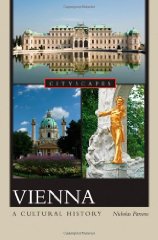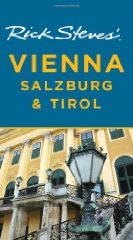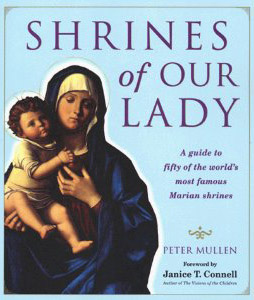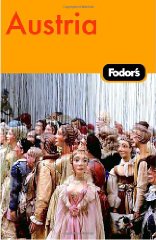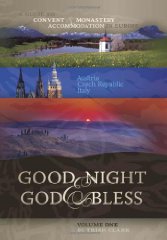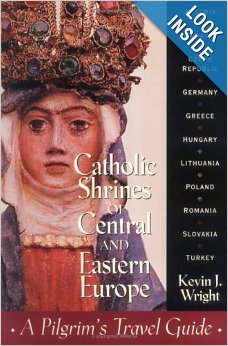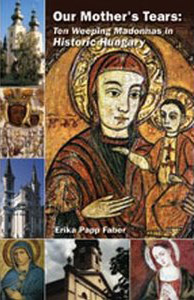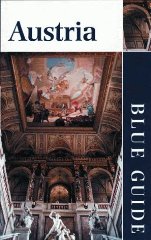Strict Standards: Declaration of McalendarControllerMCalendar::display() should be compatible with McalendarController::display($cachable = false, $urlparams = false) in /home/nrnvguvu78sn/public_html/components/com_mcalendar/controllers/mcalendar.php on line 0
Strict Standards: Only variables should be passed by reference in /home/nrnvguvu78sn/public_html/components/com_mcalendar/controllers/mcalendar.php on line 34
Strict Standards: Only variables should be passed by reference in /home/nrnvguvu78sn/public_html/components/com_mcalendar/controllers/mcalendar.php on line 35
Strict Standards: Only variables should be passed by reference in /home/nrnvguvu78sn/public_html/components/com_mcalendar/controllers/mcalendar.php on line 36
Strict Standards: Only variables should be passed by reference in /home/nrnvguvu78sn/public_html/components/com_mcalendar/controllers/mcalendar.php on line 37
Strict Standards: Only variables should be passed by reference in /home/nrnvguvu78sn/public_html/components/com_mcalendar/controllers/mcalendar.php on line 38
Related Books
- Vienna: A Cultural History
- Rick Steves' Vienna, Salzburg, and Tirol
- Shrines of Our Lady: A Guide to Fifty of the World's Most Famous Marian Shrines
- Fodor's Austria
- Good Night and God Bless: A Guide to Convent & Monastery Accommodation in Europe: Austria, Czech Republic, Italy
- Frommer's Austria
- The Rough Guide to Austria 4
- Catholic Shrines of Central and Eastern Europe: A Pilgrim's Travel Guide
- Austria (Eyewitness Travel Guides)
- Our Mother's Tears: Ten Weeping Madonnas in Historic Hungary
- Blue Guide Austria
St. Stephen's Cathedral
(Vienna, Austria)
The Stephansdom (St. Stephen's Cathedral) in Vienna has survived through many wars and has become a symbol of Vienna's freedom. The Gothic cathedral was first built in 1147 AD and its most recognizable characteristic, the diamond-patterned tile roof, was added in 1952.
St. Stephen's Cathedral is the mother church of the Roman Catholic Archdiocese of Vienna and the seat of the Archbishop of Vienna, Christoph Cardinal Schönborn, OP. The current Romanesque and Gothic form of the cathedral, seen today in the Stephansplatz, was largely initiated by Duke Rudolf IV (1339–1365) and stands on the ruins of two earlier churches, the first a parish church consecrated in 1147. The most important religious building in Austria's capital, St. Stephen's Cathedral has borne witness to many important events in that nation's history and has, with its multi-coloured tile roof, become one of the city's most recognizable symbols.
In February, 1697, Emperor Leopold II had the miraculous image moved to St. Stephen's Cathedral in Vienna. It's still there, in a chapel to the right of the entrance. It never wept again. But a copy given by the Emperor to the church in Máriapócs wept three more times, in 1715, 1750, and 1905. This is now the most important Marian shrine in Hungary, with daughter shrines wherever Hungarians have settled.
St. Stephen's Cathedral is the mother church of the Roman Catholic Archdiocese of Vienna and the seat of the Archbishop of Vienna, Christoph Cardinal Schönborn, OP. The current Romanesque and Gothic form of the cathedral, seen today in the Stephansplatz, was largely initiated by Duke Rudolf IV (1339–1365) and stands on the ruins of two earlier churches, the first a parish church consecrated in 1147. The most important religious building in Austria's capital, St. Stephen's Cathedral has borne witness to many important events in that nation's history and has, with its multi-coloured tile roof, become one of the city's most recognizable symbols.
In February, 1697, Emperor Leopold II had the miraculous image moved to St. Stephen's Cathedral in Vienna. It's still there, in a chapel to the right of the entrance. It never wept again. But a copy given by the Emperor to the church in Máriapócs wept three more times, in 1715, 1750, and 1905. This is now the most important Marian shrine in Hungary, with daughter shrines wherever Hungarians have settled.
History
The first church to occupy the site of St. Stephan's Cathedral was a Romanesque church, which was replaced by a larger Romanesque basilica in 1147. A major fire in 1258 destroyed the basilica and construction on the present Gothic cathedral began in the early 14th century.
The cathedral suffered damage during the Turkish seige of 1683 and again in the closing days of World War II, when fire from streetfighting leapt to the rooftop. The cathedral was reopened in 1948; the roof was repaired and decorated with ceramic tiles donated by Viennese citizens in 1950.
Among the important events that have occurred at St. Stephen's are Mozart's wedding in 1782 and his funeral in December 1791.
The Maria Pötsch Icon (MP) is a Byzantine style icon of St. Mary with the child Jesus. The icon takes its name from the Hungarian Byzantine Catholic shrine of Máriapócs (pronounced Poach), from where it was transferred to Vienna. The picture shows the Virgin Mary pointing to the child (signifying "He is the way") and the child holding a three-stemmed rose (symbolizing the Holy Trinity) and wearing a prescient cross from his neck. The 50 x 70 cm icon was commissioned in 1676 from painter István Papp by László Csigri upon his release as a prisoner of war from the Turks who were invading Hungary at the time. As Csigri was unable to pay the 6-forint fee the icon was bought by Lőrinc Hurta who donated it to the church of Pócs.
After two miraculous incidents in 1696 with the mother in the picture shedding real tears, Emperor Leopold I ordered it brought to St. Stephen's Cathedral, where it would be safe from the Muslim armies that still controlled much of Hungary. Upon its arrival after a triumphal 5-month journey in 1697, Empress Eleonora Magdalena commissioned the splendid Rosa Mystica oklad and framework (now one of several) for it, and the Emperor personally ordered the icon placed near the High Altar in the front of the church, where it stood prominently from 1697 until 1945. Since then, it has been in a different framework, above an altar under a medieval stone baldachin near the southwest corner of the nave – where the many burning candles indicate the extent of its veneration, especially by Hungarians. Since its arrival the picture has not been seen weeping again but other miracles and answered prayers have been attributed to it, including Prince Eugene of Savoy's victory over the Turks at Zenta few weeks after the icon's installation in the Stephansdom.
The residents of Pócs wanted their holy miracle-working painting returned, but the emperor sent them a copy instead. Since then, the copy has been reported to weep real tears and work miracles, so the village changed its name from merely Pócs to Máriapócs and has become an important pilgrimage site.
What to See
The cathedral is an impressive Gothic edifice of dark stone with a colorful tiled roof and a north tower rising to 450 feet (135m) named Alter Steffl, "Old Steve." Originally built between 1359 and 1433, it was reconstructed after severe war damage. A climb of 343 spiral steps provides sweeping view of the city from the top.
The north tower (Nordturm) was never finished to match its partner, but was given a Renaissance crown in 1529. The top of this tower, also with fine views and a look at the Pummerin bell, is reached by an elevator ride. The Pummerin bell is one of the largest bells in the world, cast from a cannon captured from the Turks in 1683. It rings out over the city on New Year's Eve.
The "O5" carved into the stone outside the cathedral's massive front door has important historical significance. The 5 stands for the fifth letter of the alphabet, E. When added to the O it makes OE, the abbreviation for Österreich (Austria). It was a covert sign of resistance to the Nazi annexation of Austria.
The interior is packed with interesting things to see, including many important artworks. One of the greatest treasures is the Wiener Neustadt altarpiece (1447) in the left chapel of the choir. Richly gilded and painted, it depicts the Virgin Mary between St. Catherine and St. Barbara.
The stone pulpit (1510-50) in the middle of the nave bears the images of four Latin church fathers: Ambrose, Jerome, Gregory and Augustine, all full of personality. A rare self-portrait of the artist (Anton Pilgram) is under the stairs, looking out a window with his sculptor's compass. This marks the transition point into the Renaissance, when artists began to be famous instead of anonymous.
The pulpit's railing is covered in interesting symbols: the lizards are animals of light, the toads are animals of darkness, and the "Dog of the Lord" at the top protects the sermon from their influence. Wheels with three parts (the Trinity) roll up, while wheels with four parts (the four seasons, representing mortal or worldly life) roll down.
Also of note is the unusual 17th-century tomb of Emperor Frederick III in the Apostles' Choir, which depicts hideous creatures trying to wake up the emperor.
Basic Information
| Year consecrated: | 1160 |
| Ecclesiastical status: | Cathedral |
| Architectural style: | Gothic |
| Address: | A - 1010 Wien, Stephansplatz 3 Vienna , Austria |
| Coordinates: | 48.2085, 16.373 |
| Website: | www.stephansdom.at |
| Phone: | 1/317-2859 |
| Hours: | Daily 6am to 10pm. No access to the nave during services. |
| Cost: | Free |
| Transportation: | Bus: 1A, 2A or 3A U-Bahn: Stephansp |
| Lodging: | View hotels near this location |
Note: This information was accurate when first published and we do our best to keep it updated, but details such as opening hours can change without notice. To avoid disappointment, please check with the site directly before making a special trip.
Map
Resources
-
Our Mother's Tears: Ten Weeping Madonnas in Historic Hungary
Erika Papp Faber
Academy of the Immaculate
2006
ISBN: 1601140312 -
Shrines of Our Lady: A Guide to Fifty of the World's Most Famous Marian Shrines
Peter Mullen
St. Martin's Griffin
October 20, 1999
ISBN: 0312243278 -
Catholic Shrines of Central and Eastern Europe: A Pilgrim's Travel Guide
Kevin J. Wright
Liguori Publications
May 1, 1999
ISBN: 0764803344 -
Rick Steves' Vienna, Salzburg, and Tirol
Rick Steves
Avalon Travel Publishing
April 28, 2009
ISBN: 159880216X -
Good Night and God Bless: A Guide to Convent & Monastery Accommodation in Europe: Austria, Czech Republic, Italy
Trish Clark
Hidden Spring; United States edition
May 1, 2009 -
-
-
Vienna: A Cultural History
Nicholas Parsons
Oxford University Press, USA
December 16, 2008
ISBN: 0195376072 -
Austria (Eyewitness Travel Guides)
Joanna Egert-Romanowskiej
DK Travel
November 2003
ISBN: 0789496445 -
-
-

